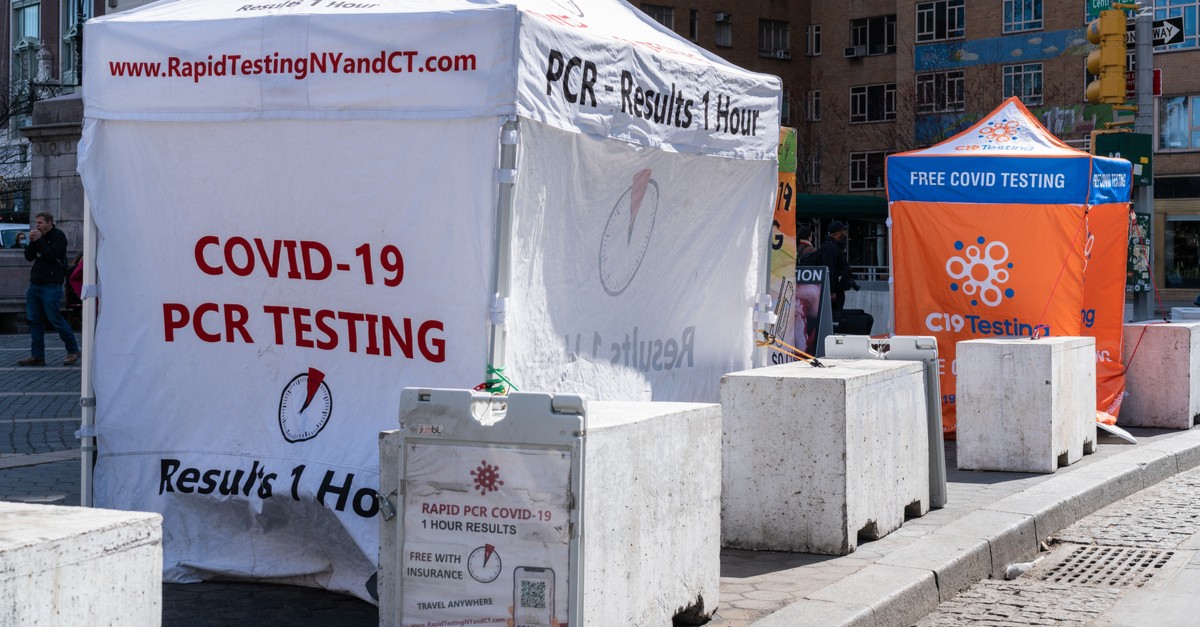
New York City, NY USA – March 22, 2022. Covid-19 mobile testing sites offering PCR and rapid testing free of charge. (Shutterstock)
By Manuel Holguin
More than two years into the pandemic, things finally seem to be moving in a somewhat promising direction; despite the spike in COVID cases this past January, numbers across the nation have decreased. So, to address questions that the public might have, Ethnic Media Services and the CDC held a briefing. Two subject-matter experts from the CDC, Dr. John Brooks, MD, Senior Science Advisor, CDC Emergency COVID-19 Response, and Dr. Shannon Stokley, Dr. Public Health, Co-lead, Vaccine Task Force, CDC Emergency COVID-19 Response, led the briefing. Both spoke on where the country stands and how we can reach a point where COVID is no longer controlling people’s lives.
Dr. Brooks spoke on the dramatic decrease in COVID cases throughout the country. New York City reported a day with zero cases at the beginning of March and had a seven-day average of reported cases in the mid-twenties. Numbers not seen in New York City since August of the previous year. This significant swing comes after a stellar spike in January, when the seven-day average reached more than 600. A report Dr. Brooks called “encouraging.”
“In some areas, we are now recording small increases, even as cases continue to fall in others,” said Dr. Brooks, referring to the BA.2 sublineage of the Omicron variant that has been reported in the U.S. and around the world in increasing numbers. During the briefing that Friday, March 25, Dr. Brooks advised reporters that BA.2 represented 35% of all the variants in the nation. However, the CDC website informed that the BA.2 variant was responsible for more than half of all cases at 54.9% by the next day. So far, the reports show that although the variant BA.2 has higher transmission than its predecessor, it does not cause any more harm, and vaccines are effective against it.
Though the number of confirmed cases increases, hospitalizations and covid confirmed deaths decrease. “I would like to emphasize that if cases rise, from the Omicron variant or any other variant, we have the tools – vaccines, tests, and therapeutics – to be prepared,” assured Dr. Brooks.
Dr. Stokley delivered only more reassurance of the ground gained over the past two years: “We’ve made tremendous progress over the last year and a half with more than 559 million doses of COVID-19 vaccines administered.” Dr. Stokley emphasized that these numbers are higher than the amounts of vaccines given out during flu season. 89.6% of New York’s population has received at least one dose, and 76.2% are fully vaccinated.
But as many states throughout the nation begin to lift restrictions set during the pandemic, many parents wonder when their children under the age of five will be able to receive their vaccine. The CDC has reported more than 400 deaths of children between zero and four years old. “I imagine that many of you are parents who may be worried about ensuring your children are protected against COVID-19,” said Dr. Stokley, a parent with the same concerns. Still, before vaccines are available to this age group, “they must go through a rigorous process to determine safety and efficacy, in keeping with all other recommended vaccines.” Once one of the many manufacturers working on the vaccine determines it is safe for children in this age group, they will apply to the FDA, which will assess its safety and effectiveness before being authorized to use.
Despite the silver lining that everyone would have wanted a year – or even just a few months into the pandemic – skepticism still exists about vaccines and boosters, especially after people who have received all the doses recommended by the CDC still come down with COVID.
But Dr. Stokley had a message for those skeptics: “What we’re really concerned about is preventing hospitalization, preventing death, and these vaccines are very good at preventing these severe outcomes. You may still get an infection even after receiving the vaccine, but usually, the symptoms are mild.” She points out that the statistics of those who are boosted are 21 times less likely to die from COVID.
“Our goal is to get to a point where COVID-19 is no longer disrupting our daily lives,” said Dr. Stokely. “Vaccination and our proven prevention measures are how we reach this point.”

